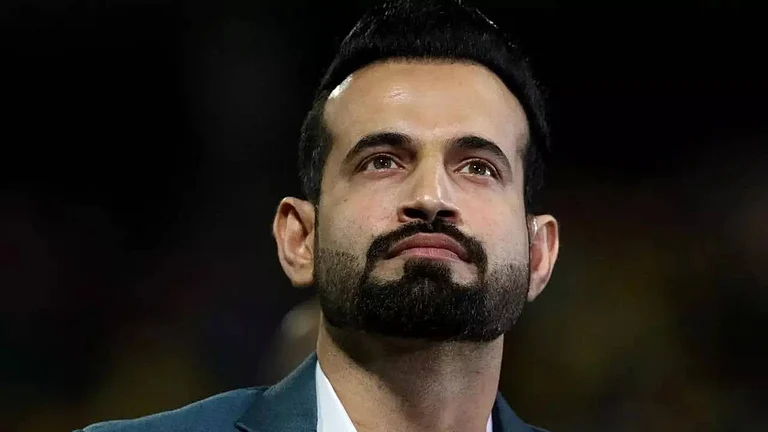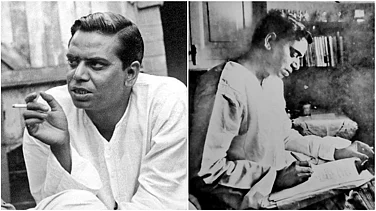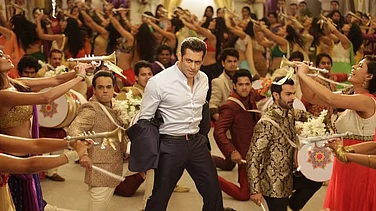In the vibrant world of Indian classical dance, Shivani Varma stands as both a torchbearer and a trailblazer. A distinguished disciple of the legendary Pt. Birju Maharaj and Guru Shovana Narayan, she is one of India’s most renowned Kathak artists and cultural curators. With a foot firmly rooted in tradition and an eye on innovation, she is reshaping how Kathak connects with audiences, challenging the notion that classical arts can’t survive the age of the scroll. From gracing stages like Lollapalooza and Jahan-e-Khusrau to choreographing for icons like A.R. Rahman, Shivani’s influence is undeniable. As the founder of World Kathak Day and the Dastaan-e-Kathak festival, and a nominated member of the Sahitya Kala Parishad, she is not just performing an art form—she is architecting its future.
In this candid conversation with Ananya Kumar, Shivani Varma speaks of her unexpected journey from a family of lawyers to the world of Kathak, and the profound mentorship that shaped her. Reflecting on the art form's contemporary landscape, she addresses the financial and societal roadblocks faced by classical artists today, contrasting the warm reception abroad with the cultural disconnect at home. As an innovator, she shares the personal inspiration behind her initiatives to revitalise Kathak, offering a thoughtful critique of its mainstream portrayal while providing a hopeful, grounded vision for its future.
A legacy of law or an unexpected calling, was a life in dance always your dream, or did the art form find you?
Dance definitely found me, though I suspect it was my mother’s dream long before it was mine. She held artists like Pt. Sonal Mansingh and Pt. Birju Maharaj in such high regard, and when I was born, her immediate thought was, "Now that I have a daughter, I will teach her Kathak." But my own childhood aspirations were shaped by a different world entirely. I come from a family of lawyers, and I was utterly captivated by their universe. I remember being a child wanting nothing more than to be part of the intellectual buzz, the 'law talk' that filled our home. So, for the longest time, I was convinced I would become a lawyer.
Dance entered my life subtly, arriving through the guidance of the right mentors at just the right time. It was a gradual immersion, not a sudden revelation. The choice to embrace it as a profession was a late and deeply considered decision. It took years to fully crystallise, and the final moment of clarity came under the tutelage of my last guru, the great Pandit Birju Maharaj. It was with him that I realised this was my true calling. I understood then that Kathak could no longer be a passion I pursued on the side; it had to become the very epicentre and purpose of my life.
Beyond the footwork and expressions, what profound life lessons did you learn from the legendary Pt. Birju Maharaj?
Training with Maharaj-ji was an education in life itself. He taught me everything, especially how to navigate the world with grace and resilience. I was incredibly fortunate to have a period where he gave me so much of his time and, more importantly, his confidence. He would confide in me, and our relationship blossomed into something akin to a friendship. It might sound too good to be true, but we shared what I feel was the perfect guru-shishya relationship—one built on mutual exchange and friendship, not a rigid hierarchy. I share a similarly wonderful bond with Shobhna Didi (Guru Shovana Narayan).
With Maharaj-ji, the lessons were profound. He spoke of his life, his philosophy, and how he had overcome immense personal hardships to become one of India's greatest cultural treasures. The most significant lesson he imparted was the importance of having the right intent in everything you do. That was a huge realisation for me, and I was at an age where I could truly grasp its weight. His spirituality was another marvel; it was so natural, so integrated into his being. He would talk to Krishna or Sai Baba as if they were having a casual conversation in the room with us. Witnessing that wasn't a formal lesson; it was a pure, organic spiritual education.
The path of a classical artist is rarely linear. Have you faced moments of doubt about this choice?
Oh, doubts are a constant companion; they never truly leave you. Choosing a life in the arts means choosing a path of uncertainty. Dance is not a stable profession, and unlike artists who are born into a long lineage, I didn’t have a pre-carved space. I had to build my own from the ground up. In a way, that reality keeps me grounded and serves as a constant reminder that I must work relentlessly. But despite the doubts, I hold a deep conviction that dance is in my life for all the right reasons. It brings a profound joy that I wouldn't trade for anything. I even feel my background in law brings a unique, analytical perspective to my Kathak practice.
The doubts often surface because the societal ecosystem for classical arts has changed so dramatically. In our Gurus' era, Kathak was deeply respected, associated with a certain cultural elitism, and offered a sense of stability. Today, that stability must be actively created and fought for. The financial precarity is the most glaring challenge. In a field like law, you have a reasonable assurance of a certain income every month. Dance offers no such guarantee. That is the fundamental battle we, as artists of this generation, constantly face.
You've taken Kathak from temples to Lollapalooza. What has been the audience reaction abroad, and how do you feel it compares to its reception in India?
Internationally, the reactions are almost always overwhelmingly positive and curious. India, to the West, represents an ancient, rich, and fascinating culture, which is a world away from their own. This creates an inherent interest. Once you take the time to explain the nuances of the art form, its history, and its stories, audiences are completely captivated. The experience of representing your culture on a global stage is incredibly powerful and fills you with immense pride. It’s a wonderful feeling to see our traditional dance forms being accepted with such open arms abroad.
To be honest, I find that celebrating our art is often easier abroad than it is in India right now. And that is a truly sad reality. As a culture, we seem to be losing touch with our own artistic heritage. You see a lack of excitement for our own languages, our own music, our own dance. The widespread preference for speaking English over our mother tongues is a very telling symptom of this larger cultural drift. In that respect, I believe India is currently the most challenging and complex place for a classical artist to thrive.
Does mainstream cinema oversimplify Kathak, or does it help celebrate it? Are there any performances that you feel truly respect the art form?
It's a classic double-edged sword. On one hand, I am a huge admirer of Bollywood; they are undeniably the biggest and most powerful performance art storytellers we have today. The tragedy, however, is that the deep, symbiotic relationship that classical arts once shared with cinema is virtually non-existent now. In the golden era, films were steeped in Hindustani music and dance. Masterpieces like Mughal-e-Azam, Pakeezah, and Umrao Jaan, and even later films like Devdas, saw legendary gurus being brought in to choreograph and train the actors with authenticity.
Today, the landscape is dominated by Western styles and fusion dance forms. When Kathak does appear, it is often a superficial, overly simplified version. You can see the effort from the actors, but the soul of the dance, its intricate grammar, and the cultural context are often lost. A recent example is the Gaja Gamini walk from Heeramandi. It went viral, which is great for visibility, but it became famous for reasons that were detached from the authentic grace and technique of Kathak. Bollywood has an immense platform to preserve and promote our culture, but it must do so with deeper research and genuine respect. For truly brilliant portrayals, one must look back to Madhuri Dixit in Devdas, who was trained by Pt. Birju Maharaj himself, and the timeless performance of Rekha in Umrao Jaan. Those films showcase the intricacies and soul of Kathak beautifully.
You've been a powerful force for change with initiatives like World Kathak Day and the Dastaan-e-Kathak festival. What was the personal inspiration behind them?
When Maharaj-ji passed away in 2022, I was devastated. I was in a very bad state of grief. Although I had formally learned from him for just about six years, his influence on my life and art was immeasurable. The idea for World Kathak Day emerged from that very personal space of mourning. It felt like a message from above, a way for me to process my grief by contributing something meaningful as his shishya and keeping my connection to him alive. That's why we chose his birthday, February 4th, to honour his memory. The larger vision was to create a day to celebrate not just the dance, but the very essence of Indian cultural storytelling and to ensure this great legacy is carried forward for the next generation.
While World Kathak Day is a global call for everyone to celebrate, Dastaan-e-Kathak is my personal, curated festival. It's my copyright and my way of setting a specific tone, a distinct aesthetic, and a clear artistic vision for how this day can be observed.
You've spoken of Kathak as a tool for change. What kind of social issues have you personally explored through your performances?
I firmly believe that art must be a reflection of the times we live in. One of the works I am most proud of is a production centred on Mahatma Gandhi. It's less a biographical piece about him and more an exploration of the timeless ideals he stood for: Ahimsa (non-violence), truth, and compassion. In a world so rife with conflict and violence, these ideas feel more relevant and necessary than ever.
However, my approach is that art should never be a sermon. It shouldn't spell everything out. It should be an invitation for the audience to think, to interpret, and to form their own conclusions. We are performers, not preachers. Our responsibility is to create a performance that is impactful enough to make viewers engage with the thought we are trying to portray. We frequently address women's issues in our work, often by invoking the power and resilience of goddesses to shed light on the struggles women face today. We also turn to the great mythological tales, like the Ramayana and Mahabharata, to explore the universal truths and complexities of human life.
Is Kathak being taken up seriously by young people today, or is it becoming just another hobby?
The seriousness with which a child approaches Kathak is almost entirely dependent on their parents. It is the parents who are shaping that perception. If they treat it as just another extracurricular activity or a hobby, that is exactly how the child will see it. But if they position it as a serious discipline and enroll their child with a dedicated guru from a young age, it becomes a completely different journey. My own mother, for instance, framed it as a core subject for me, just as vital as English, math, or science. It was simply part of my essential curriculum.
A major problem I see today, particularly among the urban elite, is a culture of impatience and short-sightedness. A parent might say, "My child has been doing this for a year and is bored, so let's jump to another activity." That is not how you learn an art form. Mastery requires years of dedicated practice, a deep understanding of the grammar, and consistent performance. When parents make these fleeting decisions, the art form itself suffers. I focus on this segment not to be elitist, but because this is the group that can typically afford the classes, workshops, and academies that sustain the ecosystem. If this segment loses interest and commitment, we will face a monumental challenge in preserving our art for the generations to come.
Finally, what essential advice would you offer to an aspiring dancer who dreams of pursuing Kathak professionally?
First and foremost, complete your formal education. It provides a foundation and a safety net. Secondly, your first guru is perhaps the most important choice you will ever make. They lay the groundwork for your entire artistic life, so seek out someone with deep experience and integrity. Kathak is a path of immense hard work and unwavering consistency. I would urge the younger generation to embrace a slower, more deliberate pace. Focus on mastering the specifications, the grammar, the nuances. Be patient, and the right opportunities will eventually find you.
Never be greedy for the stage; let your readiness, not your ambition, dictate when you perform. Most importantly, hold on to your originality. Your dance must be a reflection of who you are. See yourself not just as a dancer, but as a custodian of a precious culture. The responsibility of preserving it with authenticity is paramount. While a profession in the arts doesn't promise a fixed income, if you remain true to your craft and your purpose, you will find your path.


























